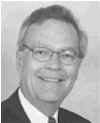|

|
Skeletons
in the Closet
Bones
of Virginia
If
these bones could talk, what stories Virginia
skeletons would tell! Over the years, the discovery
of human bones has become common enough that the
removal of remains is governed by Virginia
Antiquities Act, which requires permits from the
Virginia Department of Historic Resources.
Actually,
Virginia’s first archeologist was none other than
Thomas Jefferson, considered the father of the
discipline. He is recognized for developing
excavation techniques when he explored an Indian
burial mound on the grounds of his estate in 1784.
Instead of digging downwards, he cut a wedge into
the mound, so he could walk in, see layers and
examine them horizontally. He described his finds in
detail in his 1781 study of Virginia’s natural
history, Notes on the State of Virginia.
“I
first dug superficially in several parts of it [a
mound], and came to collections of human bones, at
different depths, from six inches to three feet
below the surface.” He concluded that the more
than 1,000 skeletons that might be in the mound were
part of an Indian burial ground that had been used
over multiple generations.
One
of the most interesting bone tales in the
commonwealth is the effort to identify a skeleton
found in Jamestown as that of Bartholomew Gosnold,
one of the main organizers of the Jamestown
expedition, who died three months after the group
entered the Chesapeake. Most recently, the
Association for the Preservation of Virginia
Antiquities reports that a tooth test suggests the
skeleton came from the area in England where Gosnold
was born, but that other identities could also be
possible. It could be Captain Gabriel Archer, Sir
Ferdinando Wenman or Lord De La Warr, all among
Jamestown’s first settlers. Apparently, it’s
possible to compare the ratio of strontium and
oxygen isotopes in teeth to the ratio of the same
isotopes in drinking water in specific regions. A
lab in Nottingham, England conducted the tests last
year.
Speaking
of England, singer Wayne Newton attempted to bring
Pocahontas’ remains back from a church near London
to her Virginia birthplace, reported People
magazine more than a decade ago (“A True Legend.
Pocahontas,” July 10, 1995). Newton claims to be a
descendant of Virginia’s famous Indian princess.
The
Old Dominion also has returned its skeletal finds to
their rightful resting places in other states. In
June 2006, two archeologists from the Fairfax County
Park Authority drove to Massachusetts to return the
remains of six Civil War soldiers unearthed in
Virginia during the construction of a restaurant in
Centreville in 1997. After extensive research by the
Park Authority staff, volunteers and others, it is
believed the six soldiers were casualties from the
Battle of Blackburn’s Ford on July 18, 1861, which
occurred three days prior to First Manassas/Bull
Run. Union soldiers from two volunteer regiments,
the 1st Massachusetts and the 12th New York, were
among the casualties and were brought back to
Centreville to hospitals. The soldiers were reburied
at the Massachusetts National Cemetery in Bourne on
June 10, 2006 in ceremonies hosted by the
Massachusetts Sons of Unions Veterans of the Civil
War.
Sometimes
war heroes interred in other states are sent back to
Virginia. Those of Little Sorrel certainly have come
home. Since 1997, the cremated remains of Stonewall
Jackson's horse have been interred on the parade
grounds at the Virginia Military Institute at the
foot of General Jackson’s statue. It seems when
Little Sorrel died in 1885, after a career on the
Southern fair and Confederate reunion circuit, his
hide was immediately stuffed. The taxidermist,
however, took the bones as payment and they ended up
at the Carnegie Institute in Pittsburgh. It took
more than 100 years to coax them back.
NEXT:
Virginia Royalty: Kings and Queens in the Old
Dominion
--
January 8, 2007
|
|
